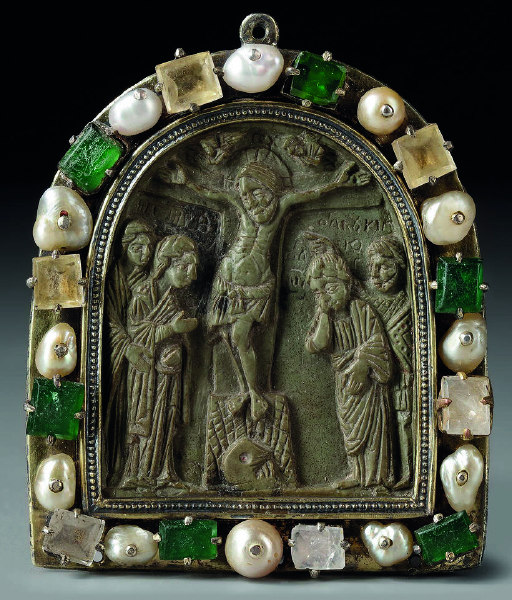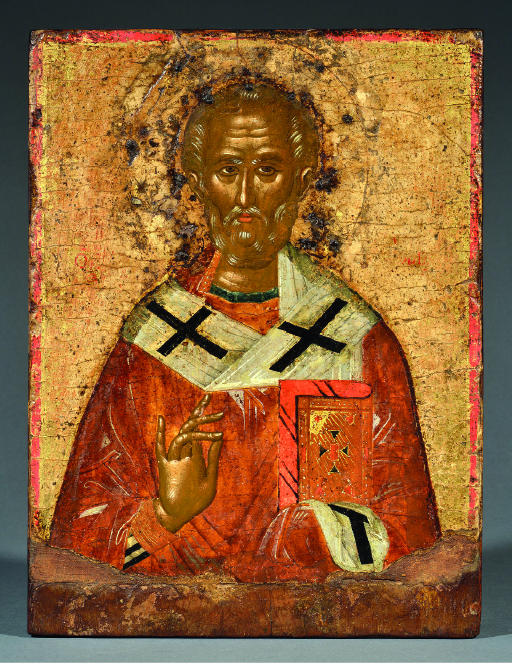1 What is an icon?
The term ‘icon’ is derived from the Greek εικών (eikṓn, meaning ‘image’). It covers a range of definitions. In its broadest meaning ‘icon’ refers to any representation of a sacred person and/or sacred event in any medium (wooden panel, manuscript illumination, wall painting, mosaic, ivory carving, etc.) and of any size (portable or monumental).

In its narrowest meaning it usually indicates a wooden painted devotional panel of variable dimensions.
This narrower meaning is the one more closely associated with the word within the faithful congregation of the Byzantine / Orthodox Church. In a tradition that continues to the present day, Orthodox Christians prostrate themselves before icons, make the sign of cross, kiss them, burn incense and light candles in front of them, carry them in processions and have them in their homes hanging on walls – not as decorative items, but as protectors and ‘watchful eyes’. Icons in their broadest sense form the core of Byzantine artistic production; icons in their narrowest sense are its most dominant item.
The establishment of icons within the Byzantine (i.e., Orthodox) Church and rite was complicated and eventful. Early Christianity had an inbuilt resistance to all forms of images. This was partly because during the persecutions of their faith, Christians had to worship against their will to idols (statues of ancient Greek and Roman gods), and partly because the Old Testament takes a clear stand against any form of the representation of the divine.
In Exodus 20:4-5 it is stated:
Thou shalt not make unto thee any graven image, or any likeness of any thing that is in heaven above, or that is in the earth beneath, or that is in the water under the earth: Thou shalt not bow down thyself to them, nor serve them.
A similar sentiment is also expressed in Leviticus 26:1:
Ye shall make you no idols nor graven image, neither rear you up a standing image, neither shall ye set up any image of stone in your land, to bow down unto it: for I am the Lord your God.
And in Deuteronomy 27:15 it is stated:
Cursed be the man that maketh any graven or molten image, an abomination unto the Lord, the works of the hands of the craftsman, and putteth it in a sacred place.
Therefore, a number of early Christians, Church Fathers as well as laymen, questioned and even opposed the representation of Christ and of any other holy person and event as idolatry. However, others defended it, and the resulting dispute marked and divided the early Christian world.

